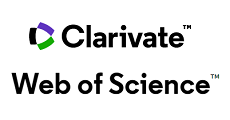Determinación del potencial depurador del cultivo hidropónico de Phalaris spp y Pennisetum clandestinum Hochst, mediante la técnica de la película nutriente
El presente estudio corresponde a la segunda etapa de la evaluación de un sistema de tratamiento de aguas residuales domésticas conocido como la Técnica de la Película Nutriente (TPN), utilizando dos especies de gramíneas: Pennisetum clandestinum Hochst (pasto kikuyo) y Phalaris spp (pasto brasilero). Los resultados permitieron establecer que las raíces actúan como un filtro biológico de los sólidos y materia orgánica, y además absorben los nutrientes contenidos en este tipo de aguas residuales. Por otra parte, el establecimiento de una cadena trófica o “cadena depuradora" de organismos (plancton y fauna asociada) contribuye en gran medida en la remoción de polutantes. Bajo las condiciones de operación, el sistema de tratamiento (TPN) removió eficientemente bacterias coliformes de origen fecal, seguido por solidos suspendidos, materia orgánica y en menor grado los nutrientes.
References
Ali, R.R., y O. M. Toro, 1985. Evaluación técnico-económica del tratamiento, hidropónico de aguas residuales para Colombia. Fase I: Construcción y puesta en marcha de la planta piloto. Tesis Ing. Civil. Bogotá. Universidad Javeriana. Facultad de Ingeniería. 214p.
Arjona, B., 1987. Evaluación de un cultivo hidropónico de Pennisetum clandestinum Hochst (kikuyo) como tratamiento biológico para aguas residuales domésticas. Tesis Biología. Bogotá. Universidad Nacional de Colombia. Facultad de Ciencias. 152p.
Berry, W.L., A. Wallace y O. R. Lunt, 1977. Recycling municipal wastewater for hydroponic culture. Hortscience 112 (3): 186. DOI: https://doi.org/10.21273/HORTSCI.12.3.186
____, A. Wallace, P. M. Patel y C. R. Lunt, 1979. Further development of the use of wastewater for hydroponic crop-culture. Alex. J. Agric. Res. 27(1): 187-198.
Bouzcun, J. R., y A. J. Palazzo, 1982. Preliminary assessment of the nutrient film technique for wastewater treatment. Special Report of Cold Regions Research and engineering Laboratories of the U. S. Army. 13 p.
____, 1982. Thin film hydroponic for wastewater renovation and reuse. ASCE Spring Convention. Las Vegas. Nevada.
____, 1982b, Nutrient film technology for the treatment and reuse of municipal wastewater. V Simposio de Tratamiento de Aguas Residuales. Montreal. Canadá. 9p.
Bone, D. A. y P. A. Stead., 1978. The nutrient film technique its connection with sewage treatment and plant growth. Portsmouth Polytechnic. Department of Civil Engineering. 6p.
____, y B. A. Winfield, 1981. The sewage farm reborn. Journal of the Institution of Public Health Engineering 9 (4): 185-186 y 198.
Boutin, C., 1987. Domestic wastewater treatment in tanks planted with rooted macrophytes: case study; description of the system; design criteria; and efficiency. Wat. Sci. Tech. 19 (10): 29-40. DOI: https://doi.org/10.2166/wst.1987.0095
Brix, H., 1987. The applicability of the wastewater treatment plant in othfresen as scientific documentation of the root-zone method. Wat. Sci. TEch. 19 (10): 19-24. DOI: https://doi.org/10.2166/wst.1987.0093
Buckteeg, K., 1987. Sewage treatment in helophyte bed first experiences with a new treatment procedure. Wat. Sci. Tech. 19 (10): 1-10. DOI: https://doi.org/10.2166/wst.1987.0091
Calderón, F., 1986. El cultivo de tomate hidropónico bajo el sistema TPN. I Seminario de la Asociación Colombiana de Hidroponía. Cali. Colombia. 21p.
Cooper, W. J., L. Handley, L. S. Casy, J. L. López, C. H. Fonseca, S.H. Rizvi, J. Richards y A. Vanzella, 1983. Development of The Nutrient Film Technique for Renovation of Wastewater for Non-Potable reuse. Report to U.S. Bureau of reclamation Drinking Water Research Center Florida International University. 70 p.
Fonseca, C. H. 1983. The nutrient film technique for wastewater treatment -An engineering evaluation-. Proyecto de Post-grado. Florida International University. 28p.
Metcalf y Eddy, Inc., 1985. Ingeniería Sanitaria. Tratamiento, evaluación y reutilización de aguas residuales. Segunda Edición. Editorial Labor. Barcelona. España 969p.
Reddy, K. R. y T. A. Debusk, 1987. State-of-the-art utilization of aquatic plants in water pollution control. Wat. Sci. Tech. 19 (10): 6180. DOI: https://doi.org/10.2166/wst.1987.0098
Sias, D. R. y T. A. Nevin, 1973. Experimental hydroponic gardening with municipal wastewater. Bulletin of environmental contamination and toxicology. 10 (5): 272-278. DOI: https://doi.org/10.1007/BF01684815
Sutclife, J. F., 1962. Mineral salts absorption in plants. Pergamon Press. Gran Bretaña. DOI: https://doi.org/10.5962/bhl.title.4994
Wallace, A., P. M. Patel, W. L. Berry y O. R. Lunt, 1978. Reclaimed sewage water: A hydroponic grow medium for plants. Resource Recovery and Conversation 3: 191-199. DOI: https://doi.org/10.1016/0304-3967(78)90005-7
____, S. M. Soufi y A. M. El Gazzar, 1979. Wastewater as a source of nutrients and water for hydroponic crop production in arid regions. En: Bishay, A. y W. G. McGinnies (Ed). Advances in desert and arid land technology and development. Vol. I. Harwood Academic Publishers.
Wolverton, B. O., R. M. Barlow y R. C. McDonald, 1975. Application of vascular aquatic plants for pollution removal, energy and food production in a Biological System. NASA Memorando Técnico. 14p. DOI: https://doi.org/10.9783/9781512807967-018
____, y R. C. McDonald, 1976. Water hyacinths for upgrading sewage lagoons to meet advanced wastewater treatment standards: Part II. NASA. Memorando Técnico. 21p.
____, y R. C. McDonald, 1980. Comparative study of wastewater lagoons with and without water hyacinth. Economic Botany. 34 (2): 101-110. DOI: https://doi.org/10.1007/BF02858625
How to Cite
APA
ACM
ACS
ABNT
Chicago
Harvard
IEEE
MLA
Turabian
Vancouver
Download Citation
License
Copyright (c) 1990 Luis Eduardo Cruz Torres, Flor Mariela Cuervo, Doris Yolanda Sanabria

This work is licensed under a Creative Commons Attribution 4.0 International License.
The authors or holders of the copyright for each article hereby confer exclusive, limited and free authorization on the Universidad Nacional de Colombia's journal Ingeniería e Investigación concerning the aforementioned article which, once it has been evaluated and approved, will be submitted for publication, in line with the following items:
1. The version which has been corrected according to the evaluators' suggestions will be remitted and it will be made clear whether the aforementioned article is an unedited document regarding which the rights to be authorized are held and total responsibility will be assumed by the authors for the content of the work being submitted to Ingeniería e Investigación, the Universidad Nacional de Colombia and third-parties;
2. The authorization conferred on the journal will come into force from the date on which it is included in the respective volume and issue of Ingeniería e Investigación in the Open Journal Systems and on the journal's main page (https://revistas.unal.edu.co/index.php/ingeinv), as well as in different databases and indices in which the publication is indexed;
3. The authors authorize the Universidad Nacional de Colombia's journal Ingeniería e Investigación to publish the document in whatever required format (printed, digital, electronic or whatsoever known or yet to be discovered form) and authorize Ingeniería e Investigación to include the work in any indices and/or search engines deemed necessary for promoting its diffusion;
4. The authors accept that such authorization is given free of charge and they, therefore, waive any right to receive remuneration from the publication, distribution, public communication and any use whatsoever referred to in the terms of this authorization.



























